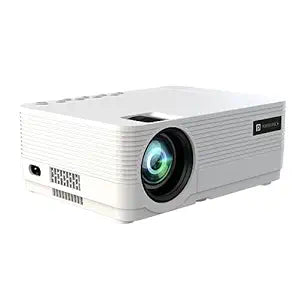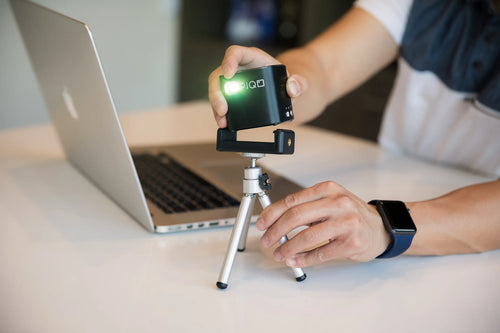Essential Guide to Maintain and Care for Your Portable Projector

Portable projectors, small and lightweight devices, are revolutionizing how we consume media and present information. These versatile devices offer a convenient way to project images and videos onto various surfaces, from walls and screens to outdoor spaces. Whether you're a business professional, a student, or simply someone who enjoys watching movies on a larger scale, mini projectors provide a flexible and affordable solution. With their compact size and easy setup, these devices can be used in a variety of settings, from home theaters to conference rooms.
In this article, we’ll be sharing with you a comprehensive review of portable projectors and the best ways to keeping them working for a long time.
Portable Projectors: A General Overview
Portable projectors are compact devices that project images and videos onto a surface. They are typically made of plastic or metal and are designed to be easily carried and set up. Portable projectors have a wide range of applications, including home entertainment, business presentations, education, and outdoor activities.
To use a phone projector, you simply connect it to a source device (like a laptop or smartphone) and project the image onto a suitable surface. Anyone can use a portable projector, regardless of their technical skills. They are particularly useful for those who need to present information on a large screen or for those who enjoy watching movies or playing games in a variety of settings.
Portable projectors offer several benefits, including portability, versatility, affordability, and the ability to create a large-screen experience in any space.
Different Types of Portable Projectors Today
Portable projectors come in various types, each with its own strengths and weaknesses. Here are some of the most common types:
LED Projectors
LED Projectors are known for their energy efficiency, long lifespan, and quiet operation. They are often more compact and affordable than other types, making them ideal for casual home use. LED projectors are likewise considered the best outdoor movie projector to bring on any outdoor activity. To get the most out of an LED projector, use it in a darkened room to achieve optimal brightness and contrast.
Pros:
- Longer lifespan
- Energy-efficient
- Quieter operation
- Compact
Cons:
- Can be less bright than other types, especially in bright environments.
Laser Projectors
Laser Projectors offer exceptional brightness, vibrant colors, and an incredibly long lifespan. While they can be more expensive, their superior image quality and durability make them a worthwhile investment for serious home theater enthusiasts. For best results, use a laser projector in a well-ventilated space to prevent overheating.
Pros:
- Extremely long lifespan
- High brightness
- Excellent color accuracy
Cons:
- Can be more expensive
- Laser light can be potentially harmful to the eyes if misused
DLP (Digital Light Processing) Projectors
DLP (Digital Light Processing) Projectors are popular for their high image quality and affordability. They offer good color accuracy and are suitable for a wide range of applications. However, DLP projectors can exhibit the "rainbow effect" in some scenes. To minimize this effect, try using a higher resolution projector or watching content with less rapid motion.
Pros:
- High image quality
- Good color accuracy
- Affordable
Cons:
- Can exhibit the "rainbow effect" (a flickering of colors) in some scenes, especially with fast-moving images.
LCD (Liquid Crystal Display) Projectors
LCD (Liquid Crystal Display) Projectors are another affordable option with good image quality. They are less prone to the rainbow effect than DLP projectors but may have lower contrast ratios and slower response times. To enhance the viewing experience, use an LCD projector in a darkened room and avoid watching fast-paced content.
Pros:
- Good image quality
- Relatively affordable
- Less prone to the rainbow effect than DLP projectors
Cons:
- Can have lower contrast ratios and slower response times compared to DLP projectors
Hybrid Projectors
Hybrid Projectors combine the strengths of multiple technologies, such as LED and laser, for improved performance. Used for various situations, settings, and events, these portable projectors offer a balance of brightness, color accuracy, and lifespan. To make the most of a hybrid projector, ensure proper ventilation and avoid exposing it to extreme temperatures.
Pros:
- Combine the strengths of multiple technologies, such as LED and laser, for improved performance
Cons:
- Can be more expensive due to the combination of technologies.
When choosing a portable projector, consider your specific needs and budget to determine the best type for you. Factors such as brightness, image quality, portability, and lifespan should all be taken into account.
Top 5 Mini Portable Projectors Today
PIQO Mini Projector

The PIQO Mini Projector is a compact and portable device that delivers impressive image quality. Despite its small size, it offers Full HD resolution and vibrant colors. With its built-in speaker and battery, it's perfect for on-the-go entertainment. Whether you're camping, traveling, or simply want to enjoy a movie in your backyard, the PIQO Mini Projector is a versatile and convenient option.
LG PH510P Portable CineBeam Projector

The LG PH510P Portable CineBeam Projector is a premium choice for those seeking exceptional image quality and a long lifespan. Powered by a laser light source, it delivers stunning visuals and a wide color gamut. With its compact design and wireless connectivity, it's easy to set up and use in various settings.
Xiaomi Wanbo T2 Max Video Projector

The Xiaomi Wanbo T2 Max Video Projector offers excellent value for its price. With its 1080p resolution and bright image, it's suitable for a wide range of applications. This portable mini projector also features a built-in speaker and multiple connectivity options, making it easy to connect to your devices.
BenQ GV1 Wireless Mini Portable Projector

The BenQ GV1 Wireless Mini Portable Projector is a unique device that combines a projector with a built-in Android TV system. This allows you to stream content directly from the projector without the need for a separate device. With its compact size and wireless connectivity, it's perfect for those who want a hassle-free entertainment experience.
Optoma ML750ST Projector

The Optoma ML750ST Projector is a short-throw projector that's ideal for smaller spaces. With its bright image and high contrast ratio, it delivers excellent picture quality. The projector also features a built-in speaker and multiple connectivity options, making it a versatile choice for home entertainment or business presentations.
It's important to note that the best mini portable projector for you will depend on your specific needs and budget. Consider factors such as resolution, brightness, connectivity options, and battery life when making your decision.
Essential Maintenance Tips for Your Portable Projector
Regular maintenance is crucial to ensure your portable projector's optimal performance and longevity. Here are some essential tips:
Clean the lens regularly: Dust and smudges can affect image quality. Use a microfiber cloth to gently wipe the lens.
Check and clean filters: Clogged filters can restrict airflow and lead to overheating. Consult your user manual for cleaning instructions.
Avoid extreme temperatures and humidity: Store your projector in a cool, dry place to prevent damage.
Inspect cables and connectors: Ensure they are securely connected and free from damage.
Monitor airflow: Keep vents clear of obstructions to allow proper airflow.
Schedule regular maintenance: Consider professional cleaning or inspections for thorough maintenance.
Additional care tips:
- Turn off your projector when not in use.
- Avoid exposing your projector to direct sunlight or heat sources.
- Use a surge protector to protect your projector from power surges.
- Follow the manufacturer's recommendations for lamp replacement.
- Store your projector in a secure, dust-free location.
Maintenance Practices
|
Task |
Frequency |
Description |
|
Lens Cleaning |
Weekly |
Gently wipe the lens with a microfiber cloth to remove dust and smudges. |
|
Filter Cleaning |
Monthly |
Consult your user manual for specific cleaning instructions. |
|
Airflow Check |
Monthly |
Ensure vents are clear of obstructions and airflow is unobstructed. |
|
Cable Inspection |
Quarterly |
Check cables for damage or wear and replace if necessary. |
|
Professional Cleaning |
Annually |
Consider having your projector professionally cleaned and inspected. |
|
Lamp Replacement |
As needed (consult user manual) |
Replace the lamp when it starts to dim or exhibit other signs of failure. |
|
Image Quality Assessment |
Regularly |
Check for any changes in image quality, such as color distortion or brightness issues. |
By incorporating these maintenance practices into your routine, you can ensure that your portable projector continues to provide reliable and high-quality performance for years to come.
Conclusion
By following the essential maintenance tips outlined in this guide, you can ensure that your portable projector continues to provide reliable and high-quality performance for years to come. Regular care, including lens cleaning, filter maintenance, and environmental considerations, is crucial for preserving your projector's longevity and image quality. Remember to consult your user manual for specific maintenance recommendations and address any issues promptly to avoid further damage. With proper care, your portable projector can be a valuable asset for entertainment, education, and business presentations.







